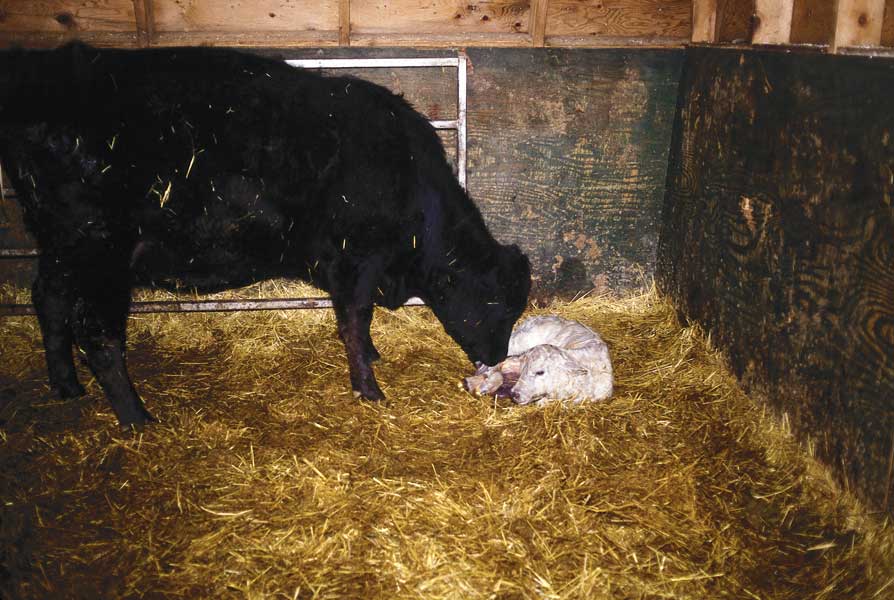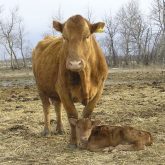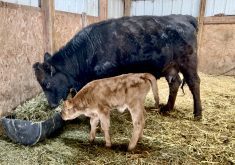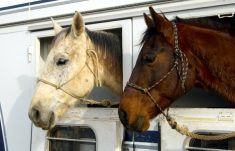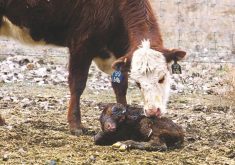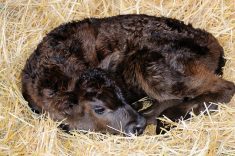In the true breech, the calf presented tail first with both back legs pointing forward under the body of the calf. A lot of producers refer to a straight backwards calf as a breech, but that is a misnomer. The true full breech has both back legs forwards so the first thing you feel when exploring the cow’s vagina is the tail. In smaller calves, the tail may even be visible outside the vulval lips.
With today’s easy calving herds, we seldom experience problems, but a breech will almost always require assisted intervention. On very rare occasions I have seen some large cows be able to have a full breech calf but the labour is long and invariably the calf is dead. One should be very mindful of cows, which normally calve easily taking too long. If there is nothing presented in 1.5 to two hours, it’s a good indication something is wrong and if nothing is presented a breech calving or torsed uterus would be tops on my list.
Read Also

Mosquito-borne virus could be devastating to sheep breeding operations
Cache Valley virus, a mosquito-borne disease that infects small ruminants, could be a devastating hit to small operations.
Be mindful of cows that have had twins in previous years as they have a propensity to twin again. The most common position for twins is one backwards and one forwards, so a breech birth is a greater possibility with twins. I don’t have any hard and fast statistics, but in our practice I would say at least half of the breech births we see are on twins and we are called in for the vast majority of breech births.
Often the water bag has not been broken as the cow can’t get enough of the calf out through the back end to break the water bag. That means the water bag has to be broken before the position of the calf can be exactly determined. Producers may want to check if the back legs are straight forward a full breech or if they are half bent back. In other words, the hocks are partially back in the pelvis and there is essentially already partial correction before delivery. These presentations I refer to as a partial or half breech. These half breeches are not as jammed into the pelvis as the cow can’t push the entire blocky mass of butt and legs to the back. For that reason, they may be easier to correct and the bottom of the foot protected as it is brought around to create a straight backwards calving.
From the Canadian Cattlemen website: The Top 10 list to an easier calving season
The reason I say most breech presentations are veterinary emergencies is because there is lots of opportunities for things to go wrong. First, time is of the essence, as most times the cow has not gone into full labour to be noticed until it is almost too late. Many of the breeches are dead before we start and if that is the case rather than risk damaging the cow we may perform a fetotomy and cut both back legs off and deliver the calf that way. There is none to little chance of lacerating the cow from the back legs being brought around.
Most veterinarians are very careful when bringing the back legs around. We need to protect the underside of the hoof as it is brought around to avoid holes being created in the uterus. In the rare event that this does happen, the uterine tear can be sutured up, but that can be difficult as the placenta is in the way. In severe cases, we may even prolapse the uterus to get a visual look at the tear. It makes suturing easier as well. In some cases, we have been called out where there has been excessive intervention and the uterus already has a major tear in it from the breech calf being pushed forwards in attempting correction. In severe cases, the calf may be pushed right out through the tear and into the abdomen. With these cases, once the calf is delivered often the uterus is amputated as these tears often extend upwards towards the cervix.
Veterinarians use a combination of technique, equipment and knowing when to be aggressive and when to be gentle in order to flex the back legs and bring them around. Sometimes with smaller calves or when one twin is breech an experienced producer will correct them. Only attempt this if you are very experienced. Murphy’s law says if it is twins most commonly the first one is backwards or breech. Other complications are the umbilical cord may be wrapped around the leg you are repositioning. It is also very hard to tell sometimes if the calf is still alive and if the legs start violently thrashing that may be a sign the calf is dying. I have seen instances where the rectum is prolapsed on the calf from the cow straining so much and yet we delivered a live calf. Other times a long-dead first breech twin is followed by a very alive second calf. You never know until you examine them thoroughly and if you need help don’t hesitate to call. As mentioned previously, this is the most common malpresentation veterinarians are called for as most producers can correct many of the other malpresentations depending on their experience level.


